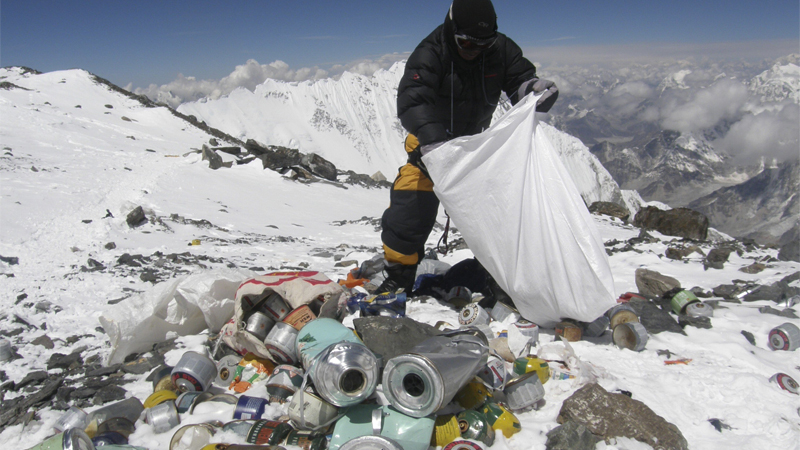|
Base camp gallery hopes to raise awareness of Everest trash problem

Alice Davis | Planet Attractions | 22 Jan 2021

 Mount Everest has long had the unenviable status of ‘world’s highest garbage dump’ Credit: AFP Mount Everest has long had the unenviable status of ‘world’s highest garbage dump’ Credit: AFP
It’s hard to know whether the upcoming art gallery on the way to Mount Everest’s base camp will be a tragic indictment of our ability to destroy the planet even at its most remote and inhospitable places, or whether it will – like many unusual attractions – be something quite wonderful.
Everest hit the headlines in 2019, when photographs showed climbers queuing to reach the peak in a year when some 60,000 people visited the area. As more climbers come, more rubbish is blighting the mountain.
More than 600 people try to scale Everest each year, with each climber discarding, on average, 8kg (18lbs) of rubbish, which includes items such as oxygen bottles, tents, ropes, ladders, cans and plastic wrappers.
That rubbish will provide the material for the artworks on display at the Sagarmatha Next Centre in Nepal, which sits 3,780m (12,400ft) above sea level and is en-route to the Everest Base Camp. The hope is that the project will draw attention to the dumping issue that plagues the mountain.
According to National Geographic, there is tons of waste on the mountain: “Litter is spilling out of glaciers, and camps are overflowing with piles of human waste. Climate change is causing snow and ice to melt, exposing even more garbage that has been covered for decades.”
There have long been programmes in place, however, to keep Everest clean and to have used items returned from the mountain. The new artworks will be a reminder of why this course of action is a necessary one.
“We want to showcase how you can transform solid waste to precious pieces of art and generate employment and income,” said project director and Sagarmatha Next Centre co-founder, Tommy Gustafsson, speaking to Reuters.
“We hope to change the people’s perceptions about the garbage and manage it.”
Museums and galleries
|
|






Supplier Showcase 2025: The biggest attractions projects landing worldwide this year
|